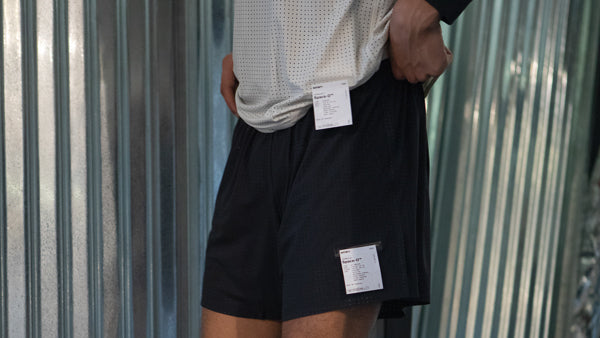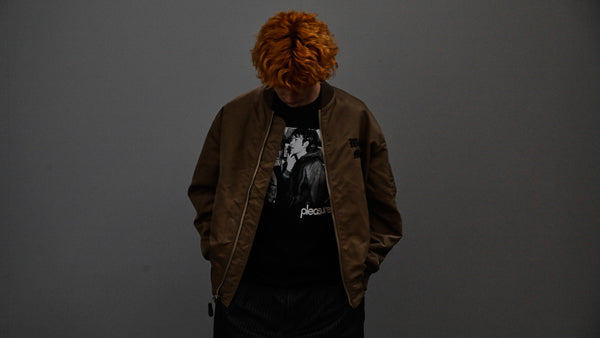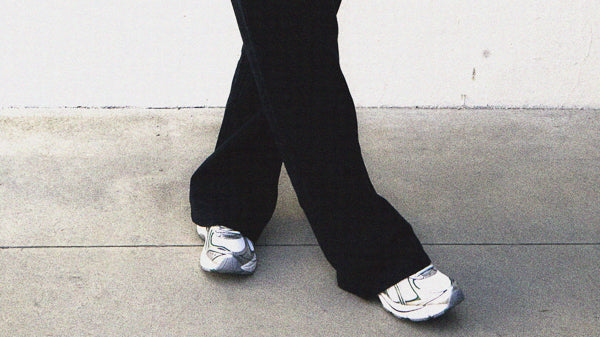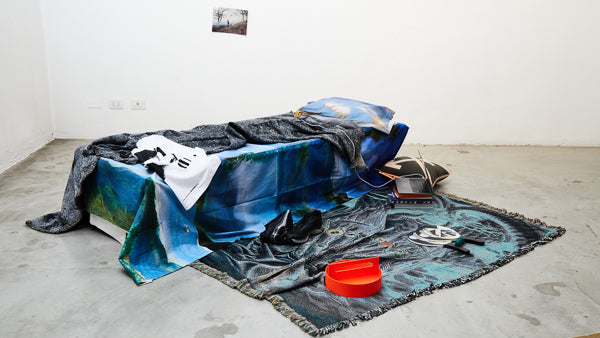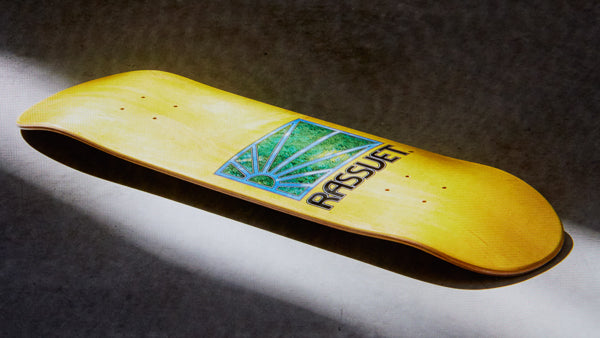STYLE 18.04.24
Joy objects, Peter Shire in conversation with Fredrik Paulsen (and donna)
PHOTOGRAPHY: Alex F. WEbb
Based in Echo Park, Los Angeles, Peter Shire is a founding member of the Memphis Group and an extraordinary postmodern furniture designer. He is also a wonderful artist and potter, and a good friend and mentor of Fredrik Paulsen. An early winter night in the JOY studio in Årstaberg in Stockholm, just in time for dinner, Paulsen caught up with Peter Shire and his wife Donna for a quick video call. The conversation ranged from Californian architecture and renaissance paintings, to pizza slices and the quality of carpentry. But mostly it was about life, craft and finding JOY.
Peter Shire: Hey Fredrik, great to see you again. So, where are we going with this? What do you want to talk about?
Fredrik Paulsen: You’re such a role model for me, have been for as long as I can remember. You’re 77 now, doing amazing work as always. So I think first of all, I just want to know… how you do it, you know?
PS: Thanks. And well, basically I just come in every day, and I like being here in the studio. Even if it’s just for an hour, and that’s all of it, a lot of it is just sort of being here. And because I’m really impressed with people that come in and start working at 8 o’clock immediately, you know, I wish I could do that and get out of here earlier. Hemingway, supposedly, when he was really going good, he would start as soon as it was light enough to work, still cold in the room, and then he’d just write and warm up doing it. But I need to mull around and do my little things, it’s kind of warming up and psyching up. I think it’s kind of a ritual for me.
Donna Shire: Sit a little further back.
PS: Sit what, darling?
DS: Sit a little further back from the screen.
PS: To be honest, my wife is how I get everything done. What do you think, Donna? How do I keep going?
DS: I think it’s an obsession. You know, it’s like real passion. That’s why I sometimes get frustrated living with him, because a lot of other things are not important to Peter. Like leaving a peach pit on the table, it doesn’t faze him. But when it comes to losing a screw or losing a chip for a piece, you know, he gets very intense. I’ve accepted it, it’s hard to change. He’d do his things whether I was here or not... The only difference is there’d be peach pits everywhere. And he thinks he sleeps eight hours, but he wakes up two or three times to read.
PS: I’d like to say it’s because I have to read, but I wake up because I have to pee!
FP: Ha ha ha. Familiar feeling.
PS: But yeah, I actually do read at night. You know as a child, I couldn’t read until I was about ten years old. I’d go into the principal’s office, and they’d give me these tests. It was really weird. All the furniture was oak in those days. Same with the doors and the door jambs. Unbelievable, right? There were these institutional benches, and I’d be doing all these tests on this bench. Maybe that’s where my obsession with furniture started. While I was doing the tests I was thinking things like “When is a table not a table? When it’s a bench”. Anyway, my mom was an inveterate reader of the New Yorker, and she read this article on dyslexia. Nobody knew what that was at that time, but she realized I was a classic case. Now everybody’s got dyslexia, it’s in style. But anyway, without my wife I wouldn’t get anything done. How’s your wife?
FP: She’s good. I mean, she quit her job and started studying again.
PS: Oh, yeah? What’s she studying?
FP: She’s studying to become a gardener.
DS: That’s fantastic. I would love to do more gardening, but I’m here. Seven days a week, all year.
PS: Yeah, but you have a lot of input in our little garden. My friend who was... He didn’t call himself a psychic. He called himself an adept. Fifteen years ago he told me to let Donna do anything she wants with the garden. So, whatever she wants, we get it done. We have two new gardeners redoing everything now. With a bunch of machines.
FP: Speaking of machines then, do you have like this big workshop and make everything in-house, or do you ever order things made?
“Just doing something properly is considered premium now.”
PS: Both. And in fact you’ve been very inspiring to me looking at woodwork that’s made out of sticks, Fredrik. So great to see you’re doing some of that in this project, too. But yeah, I used to do it all in the studio, but it’s a lot of physical work. So now I outsource a lot to a guy I know to get it made well. It’s hard to find younger people that can do it, you know? The labor pool has changed. People have moved up the food chain, as it were, and some just don’t really want to do that. We’ve gone into the wrong thing, haven’t we? We should have been handymen! These days, nobody can find anybody to work on their house and to help them and do it properly. I mean, just doing something properly is considered premium now.
FP: Yeah, similar situation here in Sweden.
PS: So much is prefab now. The builders are pretty efficient of course, but it generates low quality. If you look at these houses around Echo Park where we live, a lot of them are from the turn of the century. And then, even up until the war, houses were more or less built by hand. Carpenters had a hand saw. Not sure people know how to use one, these days. If shit really hits the fan and World War 3 comes, at least you and I have some tools and know how to put together stuff. I got to ask you: If World War 3 hits and you could choose only one tool to bring from your studio, what would it be?
FP: Hmm, let me think for a second… You know what – no tool! Let’s say I bring a hammer or an axe – I know that very soon whatever I brought will turn out to be a thing that I don’t need at all. It’s improvisation that will keep us going. So I think it’s the skill to know how to think creatively, to just like, I don’t know, problem-solve, that’s amazing. So, on that note: what inspires you?
PS: I’m asked this often, and the simple answer is more or less anything and everything. But some things are more important and have more weight. One of the things that’s always confusing is that when you say, “Oh, you know, Calder” or “Picasso”, somebody that everybody knows, then everybody’s happy. But nobody wants to hear that I was going down the street, and I saw this window, and it had a great line. Or this house on Echo Park Avenue, a street which has a slight curve to it. And I’d come around and this house would loom up. It would just appear, right, the way the street was. And somebody had painted it yellow, chrome yellow, with Magenta trim. Each time I’d come around the corner, I got to like it more. So, you know, these things I like and they inspire me. Another one of the crazy things that influenced me greatly, of course, was my mother.
FP: How?
PS: She was from Berkeley, which was a city of shingles and crafts and Maybeck buildings.
FP: Bernard Maybeck, the architect?
PS: Yes. He was a Bay Area person. San Francisco, first half of 1900:s. Everything’s very understated in the Bay Area, because San Francisco at the time was a banking town and shipping essentially. So the taste was very, very tight. My mother was from an upper-class Jewish family in San Francisco. She liked olive greens and muted colors. Then we have my dad, another big influence of course. He went to art school and was an amazing artist, and spent his later working life as a carpenter. I worked as a carpenter’s helper for about 10 summers with him, I started probably when I was eight or nine. I overheard him talking with my mother and he said, “no, he just doesn’t seem to want to go. He doesn’t seem very interested”. And she said, “well, why don’t you pay him?”. That’s a good motivation. Then I went with him, and it was great. I wish I’d done it more. I got a lot of experience making things. You know, Donna and I live in the house he built, which is a modernist house. It’s beautiful.
FP: I’ve seen pictures of it. It looks amazing. Are you in the studio or in the house now?
PS: We’re in the studio. We don’t have any computers at home. The thing about modernism is it doesn’t allow for anything else than what’s already meant to be there. There is this great photo by Julius Shulman, the architectural photographer who documented all the Mid-Century Modern houses in California, and in this photo I’m thinking of the guy is bending over the stereo console. His wife or mistress is in the serenade sofa with her petticoat dress, and he’s no doubt putting on some kind of really amazing, cool jazz album. And you know they’re going to have cocktails and then recreational sex.
FP: Living the modern dream… In a way, you’re one of the founders of the postmodern design movement. From your mom’s, as I take it, understated style to where you are now – how did you transform into what’s your style?
PS: Well, there’s a lot of stuff, you know what I mean? When you’re doing something, and you’re getting these impulses and excitement, you just keep doing it.
FP: It brings you joy.
PS: Yes. It brings you joy. And then you backtrack, trying to understand what happened and what brought you here. Like that house I mentioned… What are you eating?
FP: “I’m having a slice. Sorry. It’s dinner time here.”
PS: Oh, nice. I have a salad waiting. So anyway, you know, you’ve got the neighborhood, you’ve got my mother and you’ve got my father. You’ve got your age. You’ve got your friends. But for me, there was always a drive for color. I don’t know why, maybe it’s a California thing. I learned from my dad that when you look at Renaissance paintings, after a while you realize they’re mostly neutral. If you think of, like Rembrandt’s The Night Watch, it’s almost all black, right? It’s in this kind of weird murky green. Then you’ve got the white shirts, which become a medium grade advanced color. And then you’ve got the flesh, and you’re up a grade, and then you’ve got your total high major, which would usually be maybe the lips or the corners of the eyes, or maybe jewelry. This is what drives your eye around the painting. And I – I do it in reverse! I put the purple with the orange. Everyone’s color matching, but I’m not matching. You know why? I like it when everything’s fighting.
FP: The fun fight of colours. I like that, and a perfect way to end this conversation. Thank you Peter and Donna, keep doing awesome things!












